Welcome to the world of Japandi – the perfect fusion of Japanese minimalism and Scandinavian functionality.
Japandi style has been rising in popularity over the last few years, and it’s easy to see why.
This calming, nature-inspired aesthetic creates living rooms that are both simplistic and inviting.
Today I give you plenty of tips, examples, and advice for embracing this relaxing trend in your own home!
✨Click to Get My 101 FREE Designer Room Ideas
Incorporate Natural Elements
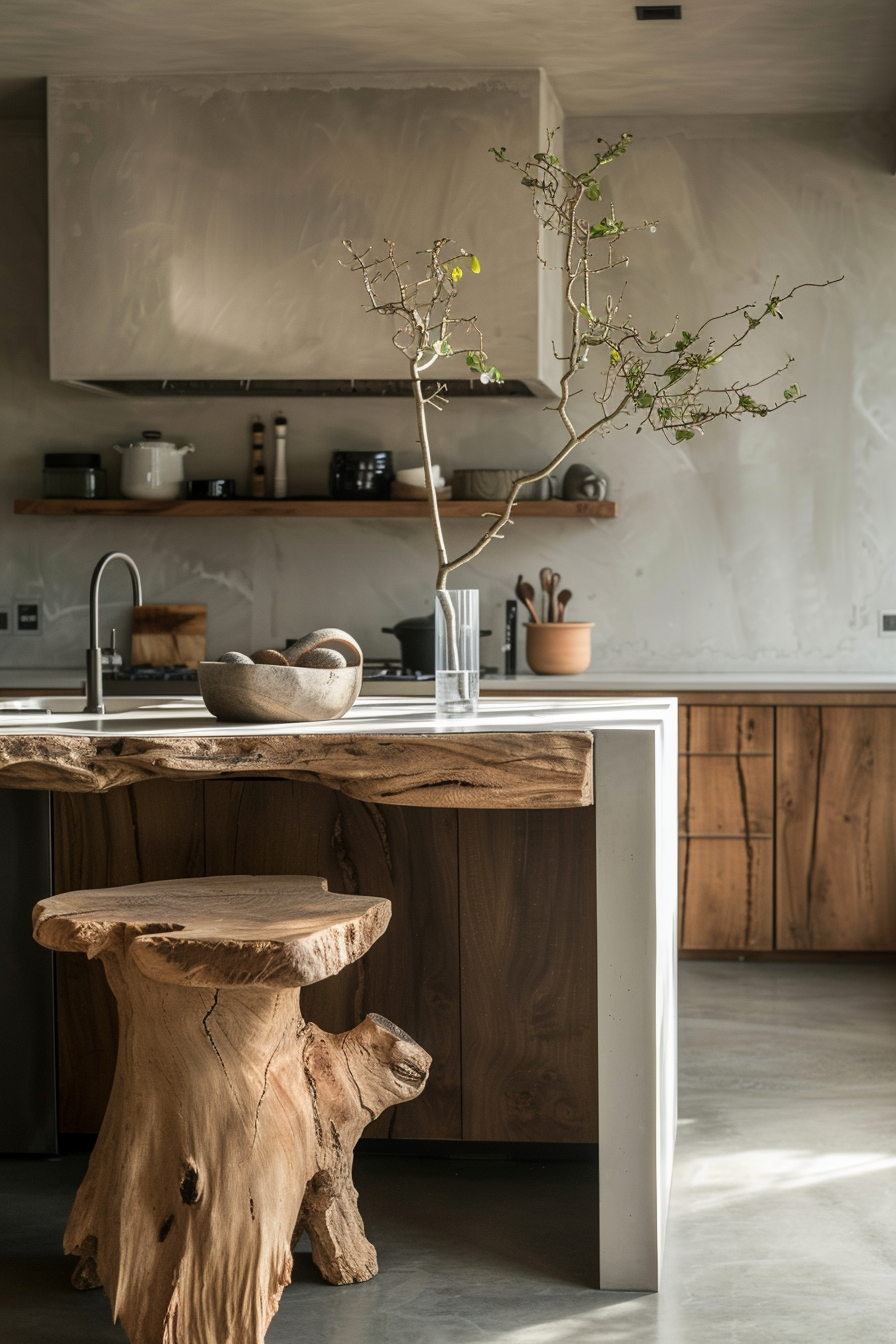
Bringing the outside in is a hallmark of Japandi design.
Natural materials and organic shapes are used liberally to connect the indoors with the outdoors.
There are plenty of ways to work nature into your living room:
– Wood is a quintessential Japandi material.
Use real wood furniture, accessories, and architectural details like wood ceiling beams or an accent wall.
Stick to light woods like oak, ash, and walnut which feel airier and less imposing.
– Add lots of plants!
Japandi arrangements feature green leafy plants like ferns, succulents, snake plants, and bonsai trees.
Cluster smaller plants on shelves, side tables, and the floor.
Place larger statement trees or tall bamboo in the corners of the room.
– Incorporate natural fibers like jute, cotton, wool, and linen.
Use them in rugs, pillows, throws, and upholstered furniture.
These organic materials bring warmth and texture to the space.
– Accent with driftwood, stones, shells, and other organic objects.
Display them in bowls or on ledges to infuse the living room with nature’s beauty.
– Pick calming nature-inspired colors like light greens, blues, browns, and neutrals.
These earthy hues recall the colors found in nature.
By thoughtfully bringing in true natural elements, you can create a living room that feels connected to the outdoors and immersed in nature.
This helps induce a relaxed state of mind.
Choose Simple, Versatile Furniture
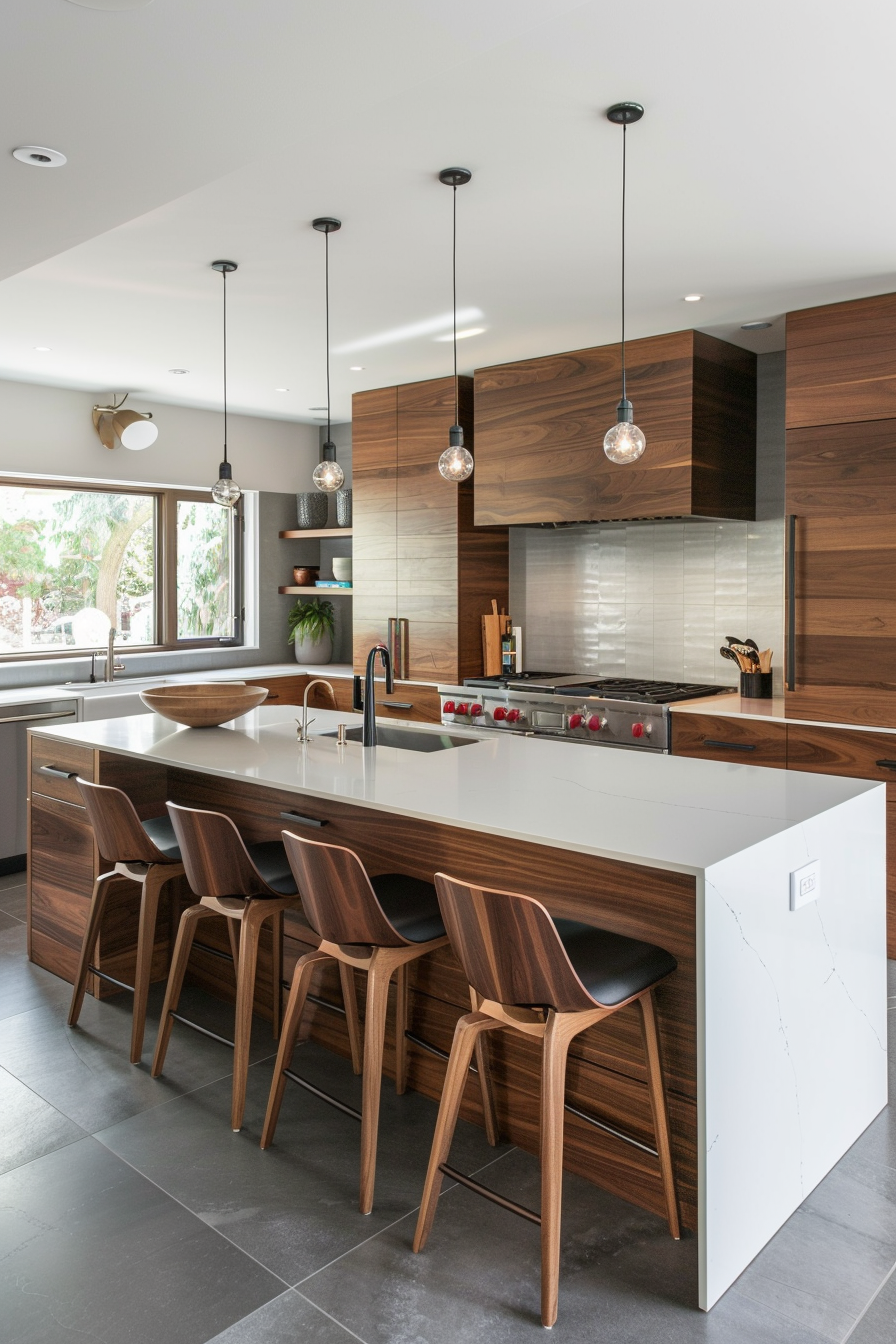
The furniture in a Japandi living room is pared down to the essentials.
Each piece serves a purpose and has clean, straightforward styling.
Follow these tips when selecting furnishings:
– Stick to just a few essential items like a sofa, lounge chair, coffee and side tables, and shelving unit.
Limit decorative-only furnishings.
– Light-colored wood furniture with gentle curves and tapered legs has an airy, organic look.
Teak, ash, oak, and acacia work nicely.
– Upholstered sofas should also have slim rounded arms and exposed legs for a lightweight feel.
Linen or cotton upholstery in neutral solids or simple patterns is ideal.
– Choose furniture with multi-functional design like sofas with hidden storage or coffee tables with lift-tops and shelves.
This streamlines the room’s contents.
– Incorporate furniture that can be moved or rearranged easily, like a small sofa, slipper chairs, ottomans, and nested coffee/side tables.
This creates a flexible, adaptable space.
– Look for furnishings made from sustainable materials like bamboo, reclaimed wood, and natural fibers whenever possible.
This ties into the ecologically-conscious aspect of Japandi style.
With curated, multifunctional, and sustainable furniture choices, you can design a tranquility-inducing living room that still feels open and spacious.
Create Separate Relaxation & Entertainment Zones
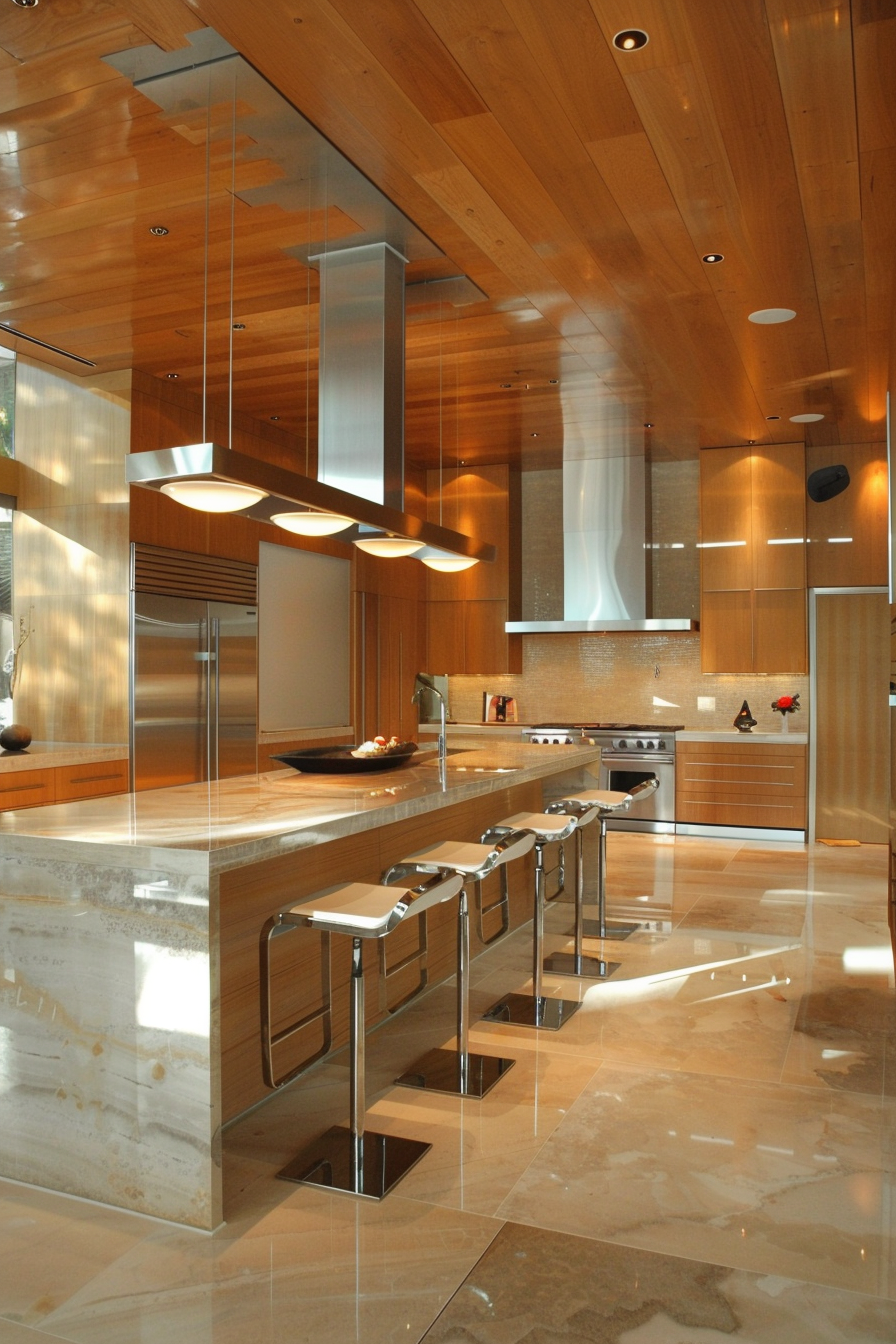

Many Japandi living rooms include two separate spaces – one for quiet relaxation, and one for socializing or watching television.
Here are some layout tips:
– Place sofas, lounge chairs, side tables, and floor lamps on one side of the room to create a cozy reading nook.
Add a large area rug to define the space.
– On the other side, put the television along with additional seating oriented towards viewing.
Avoid cluttering this area too much so it maintains an open feel.
– Pull the two zones together using a large neutral area rug that spans most of the room.
Repeat wood tones and textiles in both spaces for harmony.
– You can use a room divider screen between the spaces for subtle separation.
Choose a natural fiber screen or one with an organic pattern.
– Incorporate soft lighting on both sides.
Use floor and table lamps to create warm ambient light.
Add task lighting by the seating areas for reading or needlework.
– Finish off each area with Japandi-style accessories like plants, ceramic vases, wood trays, and natural fiber baskets.
Defining separate activity areas encourages relaxation and socialization while keeping the room feeling uncluttered.
The overall effect is balanced and serene.
Take Advantage of Natural Light

There’s no better way to connect your living room to nature than by letting in plenty of natural light.
Here are some tips:
– Position your sitting area near large windows and glass doors.
Pull back curtains and blinds fully during the day to maximize sunshine.
– Add mirrors and reflective surfaces like glass coffee tables or metal wall accents to amplify and spread natural light around the space.
– Use glass or open-frame furnishings like see-through shelves or rattan chairs to avoid blocking light flow.
– Keep wall colors light and bright.
Soft whites, pale woods, and neutral earth tones help light fill the room.
Add pops of green for freshness.
– Supplement with skylights, sun tubes, or solar lights.
This brings natural light into darker corners of the living space.
– Install window treatments in airy natural materials like linen, bamboo, or jute.
Layer sheer behind them to filter incoming rays.
– Bring the outdoors in with live plants and flowers.
Their presence contributes to a naturally-lit ambiance.
Harnessing sunshine makes your living room feel open, organic, and connected to the environment outside.
This tranquil effect is central to Japandi design.
✨Click to Get My 101 FREE Designer Room Ideas
Limit Wall Decor
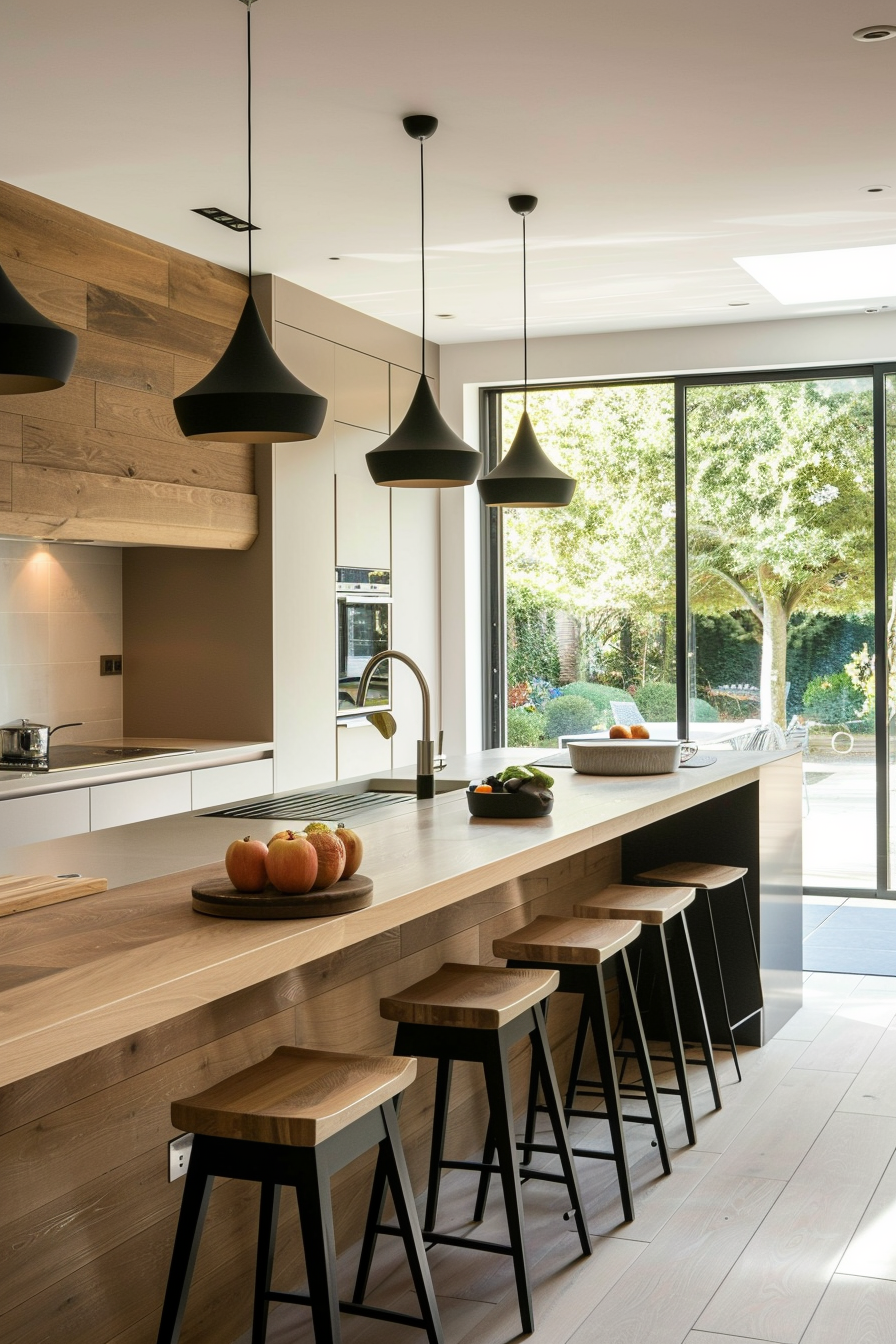
Japandi style avoids clutter and unnecessary objects.
Keep this in mind when decorating the living room walls:
– Use sheer simplicity as your guiding principle.
Only hang a few meaningful pieces like one large statement artwork over the seating area.
– Mount natural wood shelves or cubbies to display photos, meaningful souvenirs, ceramic vases, and plants without cluttering walls with frames.
– Add large floor mirrors to create depth without dominating the walls with hangings.
– Incorporate natural wall coverings like reclaimed wood planks, grasscloth, cork, or stone.
This adds organic texture while keeping things minimalist.
– Paint walls in neutral, light, breathable hues like white, tan, dove gray, or pale blue-green.
Avoid loud colors and busy patterns.
– For interest, try a textured plaster wall finish or broken paint techniques like ragged lines, blotches, or gradation in serene tones.
– Hang Japanese screens or bamboo blinds on the windows rather than heavy drapes.
These filter light softly without overpowering walls.
– Use wall sconces, pendant lights, and floor lamps to limit the need for wall fixtures.
With a less-is-more approach, your walls will exude tranquil energy rather than grab attention – perfect for relaxation.
Add Pops of Color Cautiously
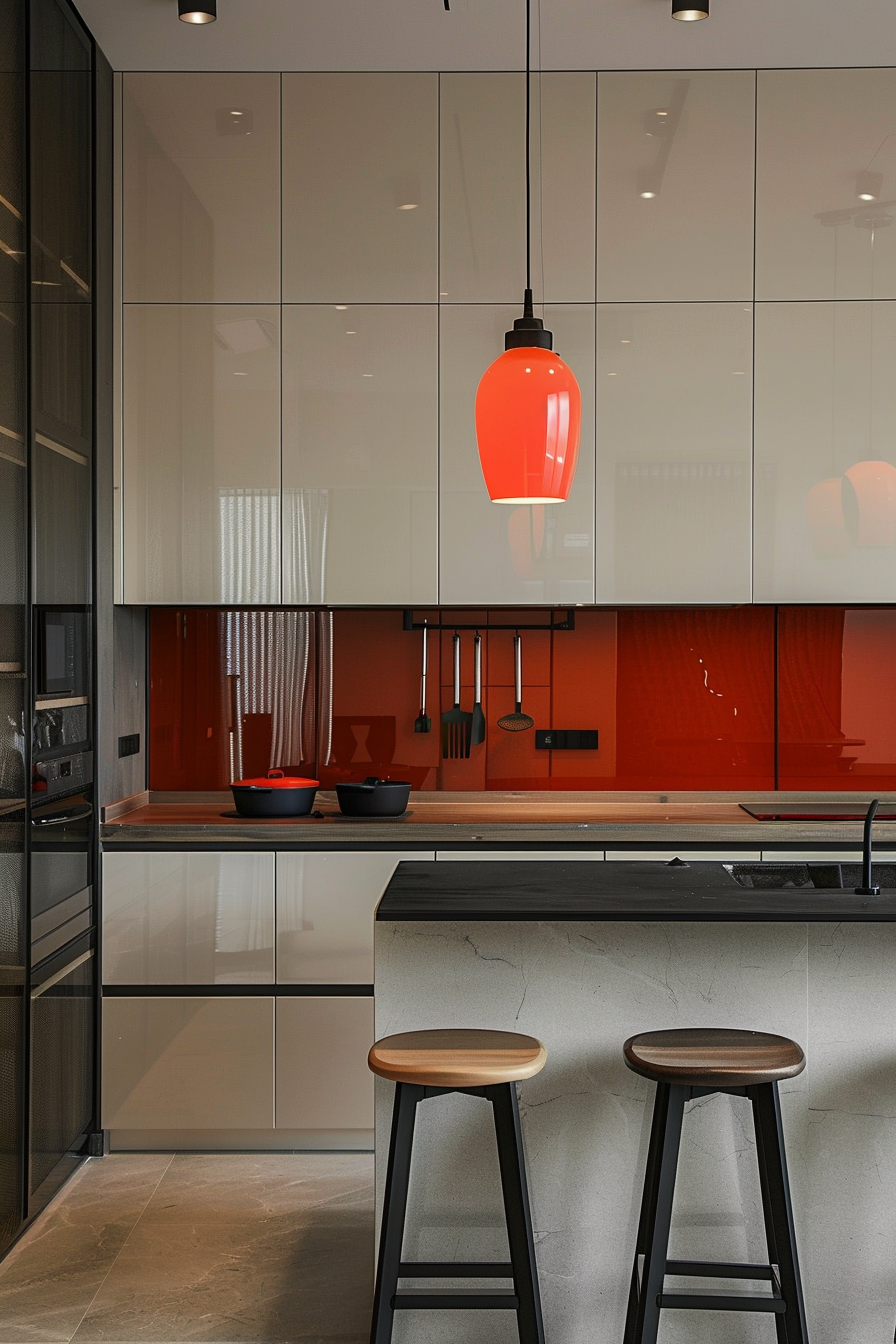
While Japandi spaces are largely neutral, small pops of color can be added for just the right amount of brightness.
Use these color tips:
– Stick to colors inspired by nature like emerald, moss, clay, stone blue, or meadow green rather than loud primaries.
Soft coral pink or salmon work too.
– Add color mainly through changeable accents like throw pillows, ceramics, books, fresh flowers, and glassware.
This allows flexibility as tastes change.
– Paint one accent wall or large piece of furniture in a muted natural tone for subtle interest.
Try light sage green, faded robin’s egg blue, or weathered barnwood brown.
– Look for patterned rugs and textiles in organic prints featuring greens, blues, and earth tones.
A Japanese wave or floral motif is perfect.
– Choose floor pillows or poufs in materials like velvet or linen in soft persimmon, buttercream, or moss for a cozy bright spot.
– Bring in colored glass bottles, vessels, or artisan glassware to display on shelves.
Aqua, olive, and smoky grays reflect nature’s hues.
By sprinkling in gentle bursts of color here and there, you add life without sacrificing the calming atmosphere.
The colors should enhance rather than dominate.
Use Textural Natural Materials
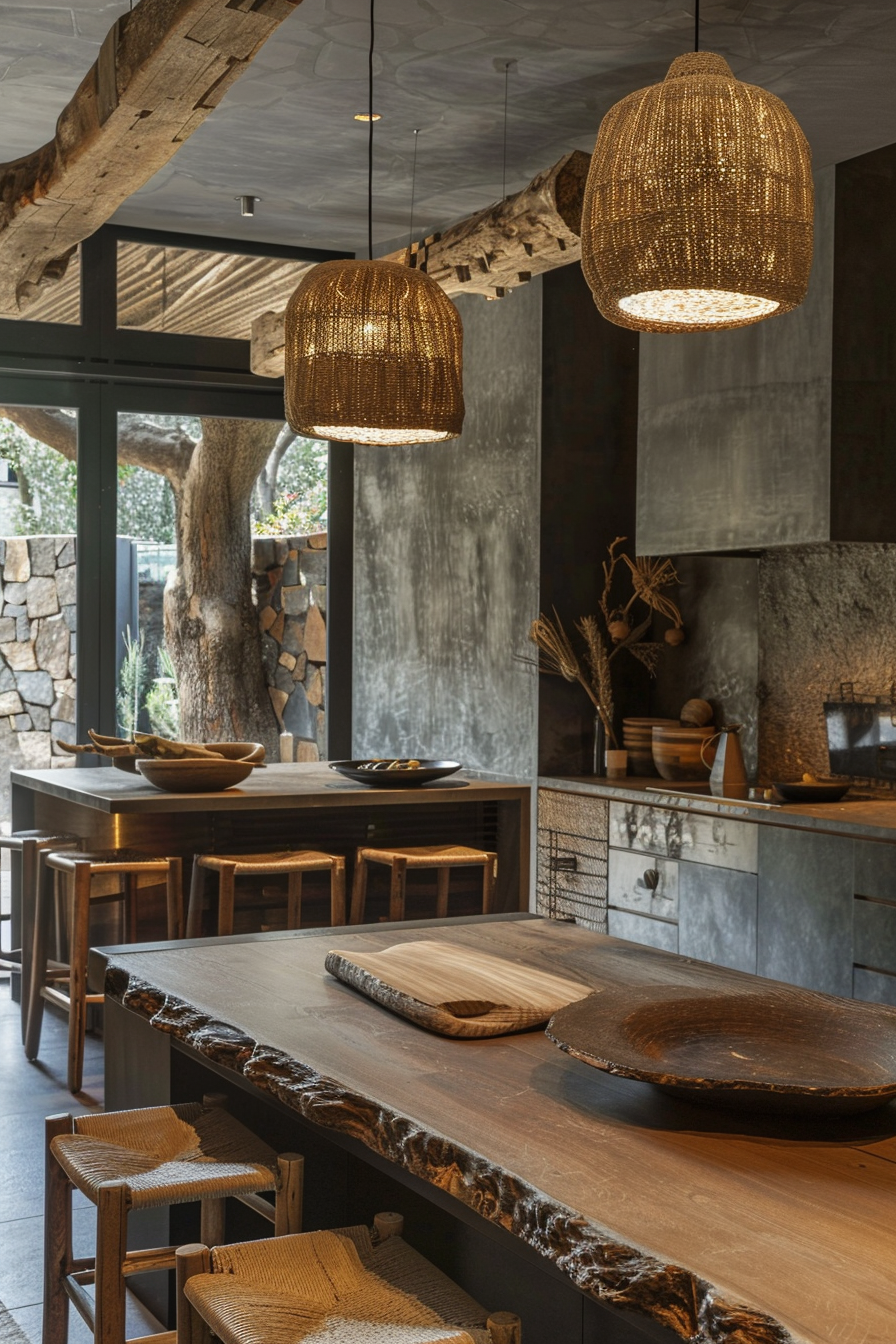
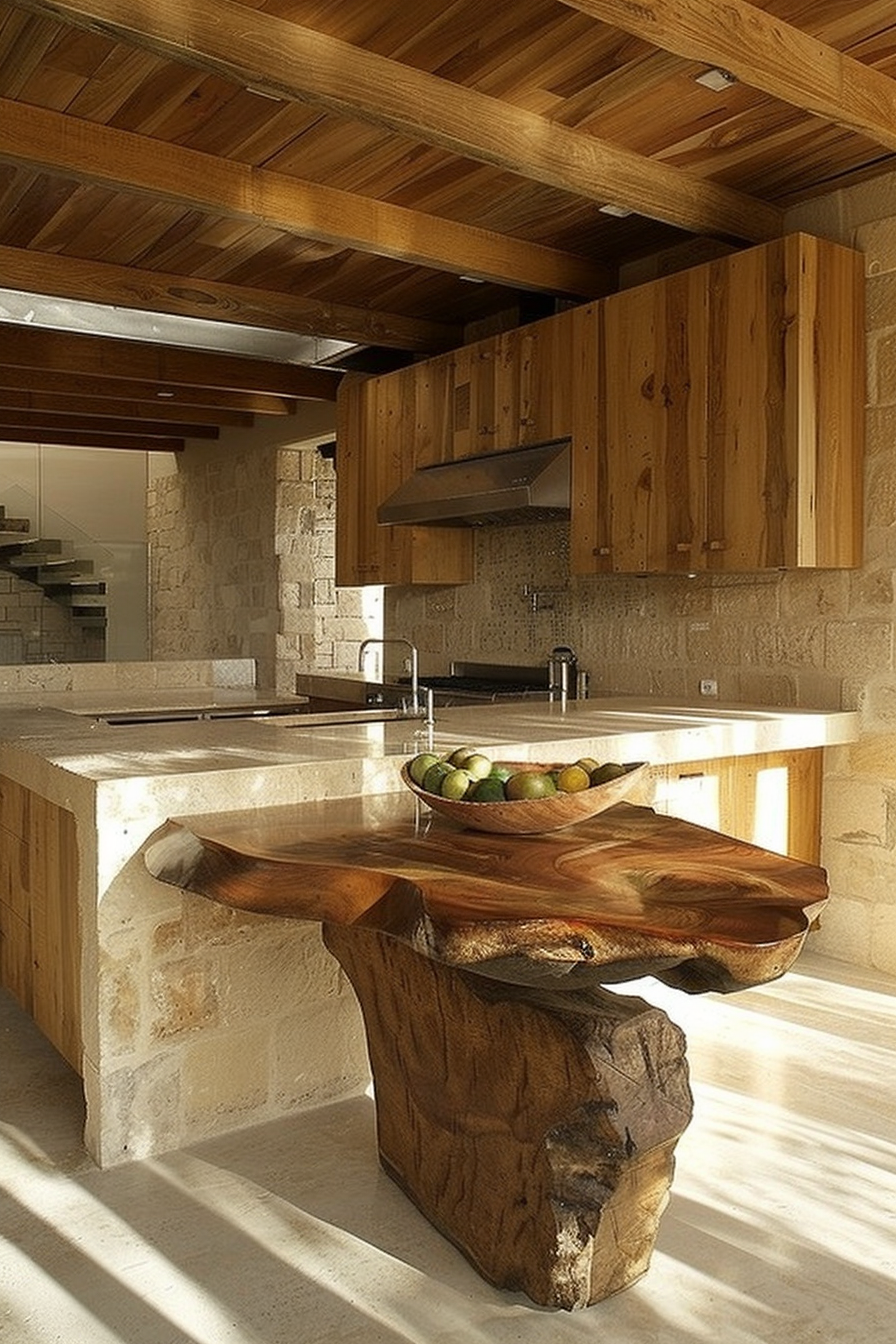
Contrasting natural textures add depth, warmth and visual interest in Japandi living rooms.
Consider these ideas:
– Choose a cozy textured rug as a focal point, like wool, braided seagrass, or sisal.
Layer a sheepskin on top for contrast.
– Bring in wood and stone.
Place a rustic wooden coffee table atop a stone or marble rug.
Use a stone-topped side table or wooden display ledges.
– Add bamboo fixtures like woven window screens or roman shades.
Use rattan or wicker baskets for storage.
– Use soft textiles like linen, cotton, jute and velvet on furnishings.
Alpaca or llama wool throws over chairs feel both nubby and soft.
– Compile different vessel textures on shelves – glass, ceramic, enameled metal, and matte wood.
– Introduce aged or distressed woods.
A reclaimed beam mantel or salvaged ladder bookshelf adds rugged interest.
– Place a soft sheepskin or alpaca rug on top of wooden flooring.
Contrast hard and soft.
– Display natural curiosities like sea-smoothed stones, feathers, shells, or geodes.
By thoughtfully combining opposing textures throughout the space, your living room will gain depth and dimension.
This makes for a multi-sensory relaxing escape.
Select Multi-Purpose Accessories

As with the furniture, accessories and accents in a Japandi living room focus on function and simplicity.
Choose versatile, useful items like:
– Handcrafted wood trays and boxes to corral small objects.
These can move around the room as needed.
– Woven baskets in natural rattan or seagrass to store blankets, magazines, and more.
They add organic texture.
– Slim shelving units to display books and decorative objects.
These maximize vertical space stylishly.
– Ceramic, glass, or wooden lidded jars for hiding remote controls and cords.
These keep clutter tucked away.
– Benches or ottomans with storage inside to serve as seating and stash spots.
Top them with trays to create table surfaces.
– Backless floor cushions that can alternate as extra seating or side tables when flipped.
– Natural fiber or indigo fabric poufs that can serve as casual seating or footstools.
– Handwoven wool or cotton throws to add warmth and disguise wear on upholstery.
These can be moved around as needed.
Choose only pieces that serve more than one function.
This streamlines the room’s contents and promotes a simplicity ideal for relaxation.
✨Click to Get My 101 FREE Designer Room Ideas
Add Elements of Handcrafted Imperfection
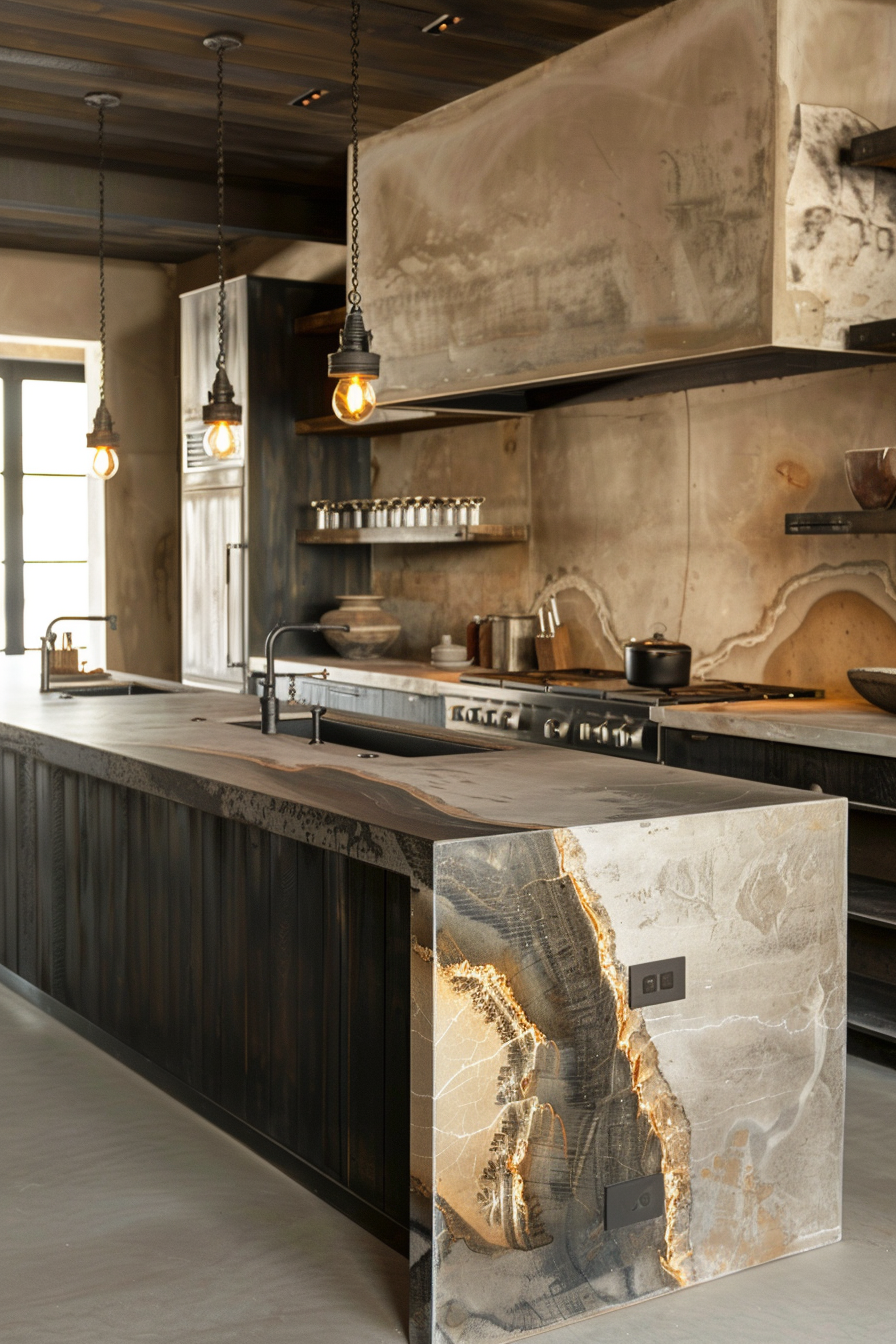
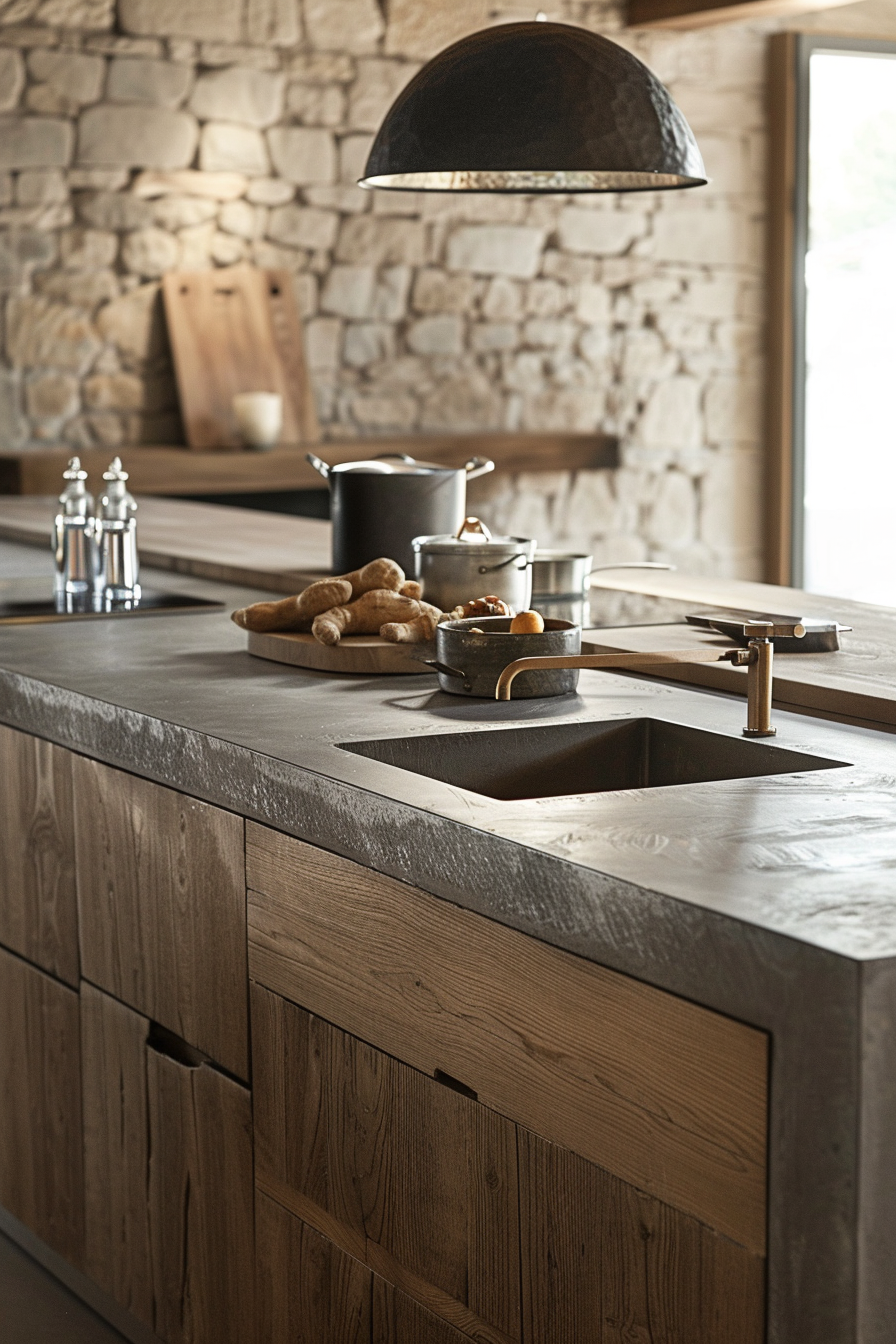
Instead of mass-produced perfection, Japandi style embraces the human touch with small flaws and irregularities.
Try these tips:
– Choose handmade ceramics with slight variations in shape and glazing for your vessels.
Support local potters whenever possible.
– Seek out furniture with visible joinery, uneven surfaces, or evidence of hand tooling rather than flawless manufacturing.
– Use wood or stone pieces repurposed from old buildings for patina-rich character.
Check architectural salvage shops.
– Pick natural fiber textiles like linen or hemp with visible loose threads, irregular yarns, and variations in dye lots.
– Search flea markets and antiques shops for charming imperfect objects with timeworn appeal like etched crystal or hammered metal vessels.
– Make your own artisan touches by displaying collections of sea glass, stones, moss, or pine cones gathered from nature.
– Try your hand at beginner-friendly crafts like hand-dipped candles, clay pinch pots, woodburned signs, or simple weavings to contribute an artisanal feel.
The slight imperfections in these objects add approachability, uniqueness, and rustic beauty true to Japandi ideals of honoring natural flaws and craftsmanship.
Evoke Serenity Through Aromas

Scent is powerfully linked to memory and emotion.
Use natural aromas in your living room to evoke tranquility:
– Display fresh flowers and live plants to scent the air with organic fragrance.
Chrysanthemums, hyacinth, jasmine and gardenias work well.
– Use dried bundles of herbs like lavender, rosemary, lemon grass and eucalyptus in vases and bowls.
– Place drops of essential oils like lavender, cedarwood, bergamot or ylang ylang onto wood furniture and lamp bases.
The warmth releases the scent.
– Burn beeswax candles infused with calming scents like vanilla, sandalwood, neroli, or chamomile.
Group them on side tables and window sills.
– Simmer a potpourri mix of dried citrus peels, pine cones, cloves, and cinnamon sticks on the stove or in a diffuser.
– Display open bowls of dried potpourri featuring relaxing herbs and flowers to scent the room.
– Install cedar lining or planks in cabinetry to release a soothing woody aroma.
By engaging the sense of smell with natural scents, your living room will feel like an aromatherapy haven for the senses.
Display Meaningful Books & Objects

While Japandi style avoids excessive objects, a few meaningful possessions displayed mindfully can enhance the space’s tranquil personality:
– Curate a selection of your favorite books on open wood shelving.
Topics like ecology, nature, Japanese arts, or Scandinavian crafts tie into the Japandi ethos.
– Place intimate framed family photos, spiritual symbols, or cherished travel souvenirs on side tables to add personal significance.
– Display prized artisan ceramics, carvings, or other handmade objects from talented artists and craftspeople.
– Rotate in seasonal mementoes like pine cones, dried leaves, seashells, or flower sprigs gathered from time spent in nature.
– If you play an instrument like the guitar or harp, place it attractively in the living area for impromptu music sessions that boost mood.
– Add meaningful sculptural accents like a secondhand chess set, smooth meditation stones, or a bamboo zen garden.
– Create memory vignettes using photos, natural curiosities, and greenery in simple frames, trays, or tabletop cases.
Thoughtfully including objects of personal significance makes this both a mindful and meaningful living space for you and your loved ones to unwind in.
Incorporate Custom Touches

Part of Japandi’s appeal is that it’s endlessly customizable to your tastes.
Get creative with DIY details like:
– Framed botanical prints featuring leaves, flowers, or mushrooms using neutral ink on recycled paper.
– Photo display ledges made from weathered wood or scrap pieces to show off favorite images.
– Meditative mantras stenciled onto the wall using minimalist lettering.
– A collage art piece made from layered washi tape in neutral patterns.
– Textile wall hangings like macrame plant holders, woven wall art, or simple fabric tapestries.
– Custom minimalist throw pillows sewn from natural linen, cotton, or hemp fabrics.
– Handmade clay incense holders, dip-dyed table runners, or block-printed lumbar pillow covers.
Infusing your personal craft into the space results in a one-of-a-kind living room retreat that reflects who you are.
Enjoy putting your own spin on timeless Japandi style.
Now you can begin mapping out the relaxed retreat you’ve been envisioning.
Japandi’s focus on natural materials, multifunctional pieces, and cozy minimalism makes it simple to curate a space devoted to mental calm and restoration.
As you embark on your own Japandi design journey, remember to let simplicity, craftsmanship, and nature guide you.
Focus on quality over quantity in choosing furnishings, textiles, and accessories.
Seek out eco-friendly materials sourced sustainably.
Display only objects holding deeper meaning.
Lastly, don’t forget to add those special custom touches that make the space distinctly yours.
Above all, approach Japandi not just as a visual style but as a holistic lifestyle.
Let the space reflect natural tranquility and graceful functionality in a way that inspires mindfulness whenever you walk through the door.
Just like a hike through the woods or seaside, being in your thoughtfully curated living room will offer a sublime opportunity to relax, breathe deeply, and reconnect with what matters most.

